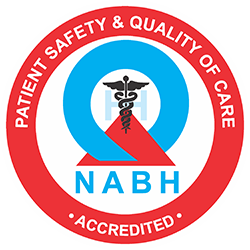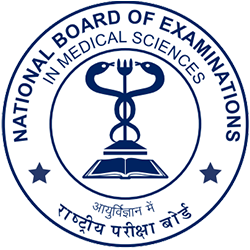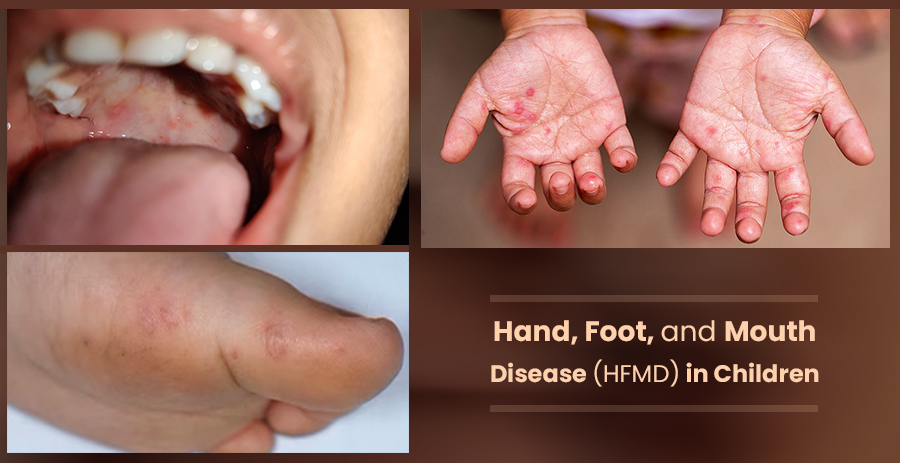A Comprehensive Guide for Parents
As parents, ensuring the health and well-being of our children is always a top priority. One of the common illnesses that can affect children, especially those under the age of 10, is Hand, Foot, and Mouth Disease (HFMD). This article aims to provide parents with a clear and comprehensive understanding of HFMD, its causes, clinical symptoms, treatment, and preventive measures. Let’s dive in to better equip ourselves to manage and prevent this condition.
What is Hand, Foot, and Mouth Disease (HFMD)?
Hand, Foot, and Mouth Disease (HFMD) is a contagious viral infection that primarily affects young children. It is characterized by a distinctive rash over the hands and feet, as well as oral ulcers. The disease is generally mild, but it can cause discomfort and concern among parents due to its symptoms.
Causes of HFMD:
HFMD is caused by viruses from the Enterovirus family, most commonly the Coxsackievirus A16 and Enterovirus 71. These viruses are highly contagious and can spread through:
- Droplets: When an infected person coughs or sneezes, tiny droplets containing the virus can be inhaled by others.
- Direct Contact: Touching the blisters or sores of an infected person can transmit the virus.
- Contaminated Surfaces: The virus can survive on surfaces like toys, doorknobs, and furniture. Touching these contaminated surfaces and then touching the mouth, nose, or eyes can lead to infection.
- Fecal-Oral Transmission: The virus can be present in the stool of an infected person. Poor hygiene practices, such as not washing hands thoroughly after using the toilet or changing diapers, can facilitate the spread.
Clinical Symptoms of HFMD:
HFMD symptoms typically appear 3-7 days after exposure to the virus. This period is known as the incubation period. The following are the common clinical symptoms:
Fever: Often the first sign of HFMD, the fever can be mild to moderate.
Sore Throat: Children may complain of a sore throat or pain while swallowing.
Oral Ulcers: Painful sores or blisters can develop inside the mouth, including the tongue, gums, and inside of the cheeks. These ulcers can make Eating and drinking is uncomfortable.
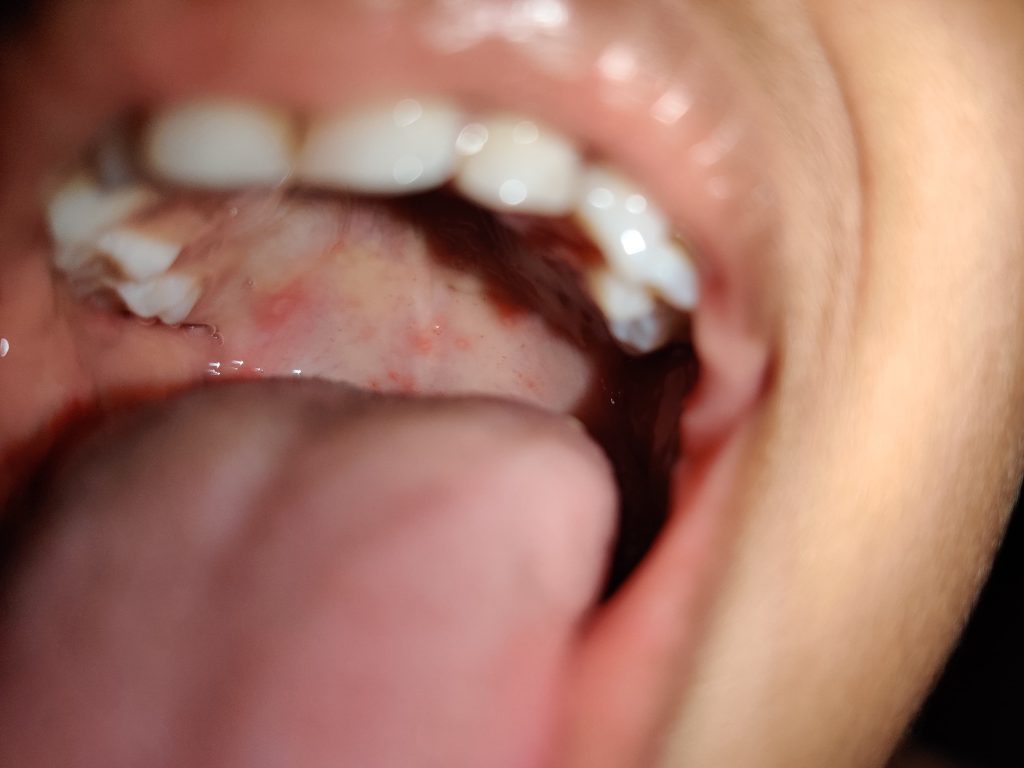
Rash Over Hands and Feet: A non-itchy rash, usually with small red spots and sometimes blisters, appears on the palms of the hands, soles of the feet, and occasionally on the buttocks and legs.
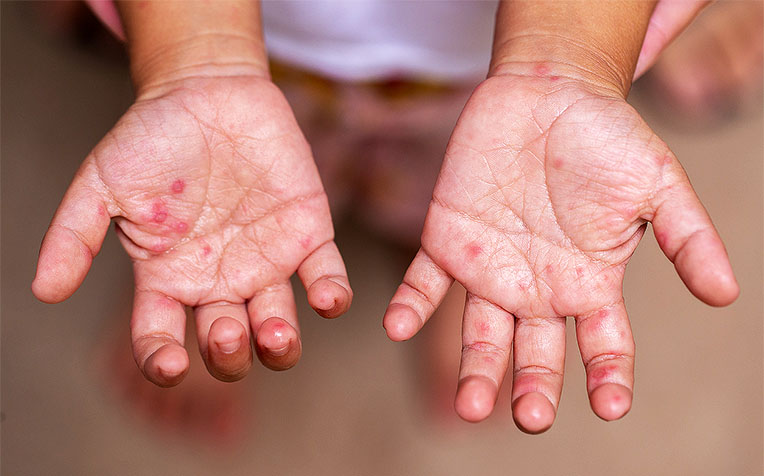
General Discomfort: Children may feel unwell, tired, and irritable.
Diagnosis of HFMD: Diagnosing HFMD typically involves a physical examination by Pediatrician, who will look for the characteristic rash and oral ulcers. In some cases, a throat swab or stool sample may be tested to confirm the presence of the virus.
Treatment of HFMD:
There is no specific antiviral treatment for HFMD. Management focuses on relieving symptoms and keeping the child comfortable:
- Hydration: Ensure the child drinks plenty of fluids to stay hydrated. Avoid acidic or spicy foods that may irritate the mouth sores.
- Pain Relief: Over-the-counter pain relievers like acetaminophen or ibuprofen can help reduce fever and alleviate pain from mouth sores and rashes.
- Mouth Rinses: Saline mouth rinses or mouthwashes recommended by a healthcare provider can soothe oral ulcers.
- Rest: Encourage your child to rest and avoid strenuous activities until they feel better.
Preventive Measures:
Preventing HFMD involves good hygiene practices and avoiding contact with infected individuals. Here are some effective preventive measures:
- Hand Hygiene: Teach your children to wash their hands thoroughly with soap and water, especially after using the toilet, before eating, and after coughing or sneezing.
- Disinfect Surfaces: Regularly clean and disinfect frequently touched surfaces and objects, such as toys, doorknobs, and countertops.
- Avoid Close Contact: Keep your child away from individuals who have HFMD. If your child is infected, keep them home from school or daycare to prevent spreading the virus to others.
- Good Respiratory Hygiene: Encourage your child to cover their mouth and nose with a tissue or their elbow when they cough or sneeze, and dispose of tissues properly.
When to See your Pediatrician / Children Specialist
While HFMD is generally a mild illness, there are instances where medical attention is necessary:
- Dehydration: If your child is not drinking enough fluids, shows signs of dehydration (dry mouth, no tears when crying, decreased urine output), or has a high fever that doesn’t respond to medication.
- Severe Symptoms: If your child experiences severe pain, difficulty breathing, persistent vomiting, or a rash that spreads or worsens, consult a healthcare provider.
Or in case of being unsure about the symptoms.
Hand, Foot, and Mouth Disease (HFMD) is a common viral infection among children that, while uncomfortable, is typically mild and manageable with proper care. By understanding its causes, symptoms, treatment, and preventive measures, parents can effectively protect their children and provide the necessary care if they contract the disease. Remember, good hygiene practices and prompt medical attention when needed are key to managing HFMD and ensuring your child’s health and well-being.
Author by :



